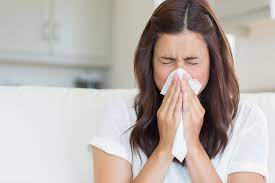A Simple List of Ways to Reduce The Impact of Allergens in The Home

Allergies affect millions of people worldwide, causing symptoms ranging from mild discomfort to severe respiratory issues. While it may be impossible to completely escape allergens outdoors, taking steps to allergy-proof your home can significantly reduce the presence of allergens indoors. Here are some best practices to consider for reducing allergens in your home:
- Dust Regularly: Dust mites are a common trigger for allergy symptoms. Dust your surfaces with a damp cloth or using a vacuum cleaner equipped with a HEPA (High-Efficiency Particulate Air) filter. Make sure to focus on hard-to-reach areas such as under furniture and behind appliances.
- Keep the Air Clean: Invest in a high-quality air purifier to filter out allergens from the air. Look for an air purifier with a HEPA filter to efficiently capture pollen, pet dander, dust mites, and other airborne allergens. Change the filters regularly to ensure optimum performance.
- Wash Bedding Frequently: Dust mites thrive in bedding, so it is crucial to wash your sheets, pillowcases, and blankets regularly in hot water. Hot water helps to kill the mites effectively. Additionally, consider using allergen-proof covers for pillows and mattresses to create a barrier between you and the potential allergens.
- Vacuum with a HEPA Filter: Vacuuming regularly is essential, but using a vacuum cleaner with a HEPA filter is even better. HEPA filters trap tiny particles, making your vacuum more effective at removing allergens from carpets and rugs. Remember to empty the vacuum canister outside to prevent reintroducing allergens into your home.
- Control Humidity Levels: Dust mites and mold thrive in humid environments. Keep your home's humidity level between 30-50% by using a dehumidifier in damp areas such as basements and bathrooms. Additionally, fix any leaks or water damage promptly to prevent mold growth.
- Remove Clutter: Clutter creates pockets where dust and allergens can accumulate. Minimize clutter in your home to make cleaning and dusting easier and more effective. Regularly declutter and organize your living spaces to reduce allergen buildup.
- Use Natural Cleaning Products: Many commercial cleaning products contain harsh chemicals that can worsen allergy symptoms. Choose natural cleaning products or make your own using ingredients like vinegar and baking soda. These alternatives are often less irritating to allergies and better for the environment.
- Keep Pets Out of Bedrooms: Allergy sufferers should keep pets out of bedrooms due to several reasons. Firstly, pets can carry allergens such as pet dander, saliva, or fur, which can trigger allergic reactions and worsen symptoms like sneezing, itching, or congestion. By keeping pets out of the bedroom, individuals can create a clean and allergen-free sleeping environment, allowing them to have a restful night's sleep and minimize discomfort. Additionally, this segregation helps allergy sufferers establish a designated area where they can find relief from their symptoms and create a sanctuary that promotes better respiratory health.



